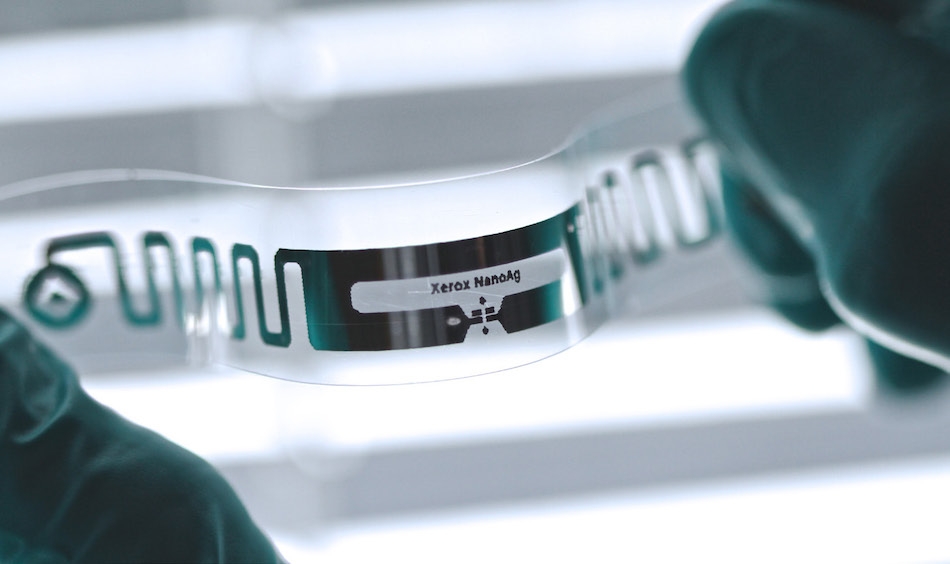
Features
Opinion
Tech
How the digital printing revolution is making the world a smarter place
November 21, 2018 By Lawrence Lee

Digital printing’s introduction sparked colossal change, but it is a drop in the big blue ocean compared to what’s on the horizon. Digital graphics printing, functional printing, and 3D structural printing are the future of printing – covering everything from smart packaging to on-demand manufacturing – and the benefits will be felt across our society.
Offering more value with digital graphics printing
We will see rapid advancements in digital colour printing in graphic communications, including new types of inks and toners that can create higher image quality and specialized effects. But there is another large new growth opportunity beyond document printing that will come from the ability to digitally print on a wider range of materials. Digital printing enables converters and manufacturers to offer more value to their customers, including late-stage customization, personalization and shelf-ready displays. Technology advancements will help deliver the benefits of digital with the image quality and run-cost of analogue printing on longer runs and a wider range of packaging media from foils and films to plastics and metals. By 2025, we will see inline digital presses in distribution centres and plants, and specialized printers and kiosks in retail stores that offer on-demand personalized printing.
Functional printing enables pervasive intelligence
Beyond graphics printing, the next frontier is functional printing. Today we see active functional inks that can change colour or structure depending on environmental factors, such as temperature. We also see early prototypes of printed electronics that enable sensing and monitoring at the individual package level. By 2025, we will see a more mature printed and hybrid electronics ecosystem, with software that will simplify electronics design and digital manufacturing systems that produce sensors, memory, communications and power options on flexible, low-cost smart tags or print them directly on products. Functional printing will give us the ability to extend intelligence pervasively to documents, products and packages. This will radically enhance existing services, from cold-chain logistics to environmental monitoring, enabling a host of new services that connect the physical and digital worlds. Print providers will deliver printed materials and analytics that result in outcome-based pricing models and greater value.
Structural printing from one to scale
Today 3D printing of parts, or structural printing, is mostly limited to rapid prototyping or specialized low-volume production. Even with current limitations, we see the value of specialized 3D printed parts. Artificial implants, for instance, can be customized to each patient and have highly specialized structures that mimic biological forms. Over the next few years, we will see new advances in high-speed 3D printing of plastics, metals and even composites, enabling large-scale manufacturing of production parts with advantages in design, weight and material properties over traditional processes. As these technologies mature, we will also see significant changes in supply chains. Sending off parts to be made in factories can be inflexible and time-consuming; structural printing allows parts to be made in an integrated process that reduces components and production steps.
Creating smart objects
Perhaps the most exciting potential is the combination of structural 3D printing and digital functional printing, where we will be able to create personalized smart products on demand. This value proposition is especially compelling in the consumer health and fitness industry. We have already seen smart clothing with embedded sensors and in the future, we will see even more personalized applications combining structural and functional properties. Take 3D-printed orthopedic inserts – with a 3D scan, it will be possible to print a custom insert and make it “smart” by embedding printed electronics to provide analytics and communicate with your smartphone.
Shaking up the industry
Print providers will be faced with new opportunities that are too good to miss, becoming one-stop-shops that provide everything from initial designs to finished products and analytics. While this may seem a bridge too far for some, new printing innovations will work with smarter software to make the market more accessible over time. AI-enabled design software will help designers and operators use these new technologies and Cloud-based software will help collect data, perform analytics, and close the loop on marketing communications and new IoT applications we can only dream about today.
Lawrence Lee is Vice President, Incubation and Strategy, Xerox.
This column was published in the November 2018 issue of PrintAction, now available online.
Print this page